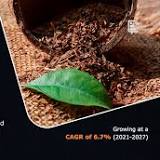June 14, 2024 14:37:17 AKDT (June 14, 2024 22:37:17 UTC)61.2959°N 151.7988°W Depth 53.0 miles (85 km)
This event has not been reviewed by a seismologist
- 27 miles (43 km) NW of Tyonek
- 30 miles (48 km) SE of Hayes Volcano
- 45 miles (72 km) N of Nikiski
- 50 miles (81 km) SW of Skwentna
- 54 miles (87 km) N of Kenai
- 61 miles (98 km) NW of Soldotna
- 63 miles (102 km) W of Anchorage
- 63 miles (102 km) NW of Sterling
- 64 miles (103 km) NE of Redoubt Volcano
- 66 miles (107 km) SW of Willow
- 67 miles (108 km) W of Elmendorf AFB
- 243 miles (393 km) N of Kodiak
- 276 miles (447 km) SW of Fairbanks
- Magnitude type: Ml2
- Event type: earthquake
Tectonic Setting of Southern Alaska
Earthquakes in Southcentral Alaska are produced by a number of different tectonic features. (1) The strongest earthquakes in Southcentral Alaska are generated by the megathrust fault that marks the contact zone between the subducting Pacific and overriding North American plates. The 1964 M9.2 Great Alaska Earthquake, which is still the second largest earthquake ever recorded worldwide, originated under Prince William Sound. (2) Intermediate-depth seismicity (below 20 miles/32 km) occurs in the Wadati-Benioff Zone, where the subducting Pacific Plate descends towards the mantle beneath the North American Plate. This zone extends along the Aleutian Arc, Alaska Peninsula, and Cook Inlet and terminates beneath the northern foothills of the Alaska Range. In southern and central Alaska, this seismicity abates at a depth of approximately 140 miles (225 km), reflecting the down-dip extension of the Pacific Plate. The 2016 M7.1 Iniskin and the 2018 M7.1 Anchorage earthquakes are the most recent notable intermediate-depth events. Both produced significant ground shaking in the Southcentral region and resulted in structural damage to buildings and infrastructure. (3) Crustal seismicity in this region can be attributed to three major sources: the faults and folds of the Cook Inlet basin, the Castle Mountain Fault, and the wide band of diffuse seismicity extending from northern Cook Inlet to the Denali Fault. Mapped geological structures in upper Cook Inlet are capable of generating strong earthquakes. The April 1933 M6.9 earthquake, which caused considerable damage in Anchorage, appears to have occurred on such a structure. The Castle Mountain Fault, which passes 25 miles (40 km) north of Anchorage, exhibits geological evidence of Holocene offsets and generated the 1984 M5.6 Sutton Earthquake. The diffuse zone of seismicity between Cook Inlet and the Denali Fault may mark a deformation zone between the Bering microplate to the west and the southern Alaska block to the east. This broad zone of seismicity includes a series of predominantly thrust faults, and a 1943 M7.0 earthquake may have originated in this band.



 New Zealand
New Zealand Argentina
Argentina  Australia
Australia  Austria
Austria  Brazil
Brazil  Canada
Canada  Germany
Germany  Ireland
Ireland  Italy
Italy  Malaysia
Malaysia  Mexico
Mexico  Poland
Poland  South Africa
South Africa  United Kingdom
United Kingdom  United States
United States 
























